October is an exciting time to visit Everest Base Camp as the weather is clear, and the skies are often a deep blue, providing spectacular views of the towering mountains. While the main attraction of this area is, of course, Mount Everest, the flora and fauna found in and around the base camp is also fascinating. Everest Base Camp is located at an altitude of 5,364 meters (17,598 feet) in the Khumbu region of Nepal
Weather at Everest Base Camp in October
If you’re planning a trek to Everest Base Camp, one of the most important things to consider is the weather. The weather in the mountains can be unpredictable, and it’s important to be prepared for any conditions you might encounter. If you’re planning to trek to Everest Base Camp in October, here’s what you can expect in terms of weather. October is one of the best months to visit Everest Base Camp, as it falls in the peak trekking season in Nepal.
More: Everest Base Camp in September – Here’s Everything
The weather in October is generally dry and stable, with clear skies and comfortable temperatures during the day. The temperature during the day can range from 10°C to 15°C (50°F to 59°F), and it can drop to as low as -10°C to -15°C (14°F to 5°F) at night. While October is generally a dry month, there can still be some rainfall, especially in the later part of the month.
Average Temperature at Everest Base Camp in October
Temperature is an important factor to consider when trekking in the mountains, as it can have a big impact on your comfort and safety. Here’s what you can expect in terms of temperature when trekking to Everest Base Camp in October. October is one of the best months to visit Everest Base Camp, as it falls in the peak trekking season in Nepal. The weather in October is generally dry and stable, with clear skies and comfortable temperatures during the day.
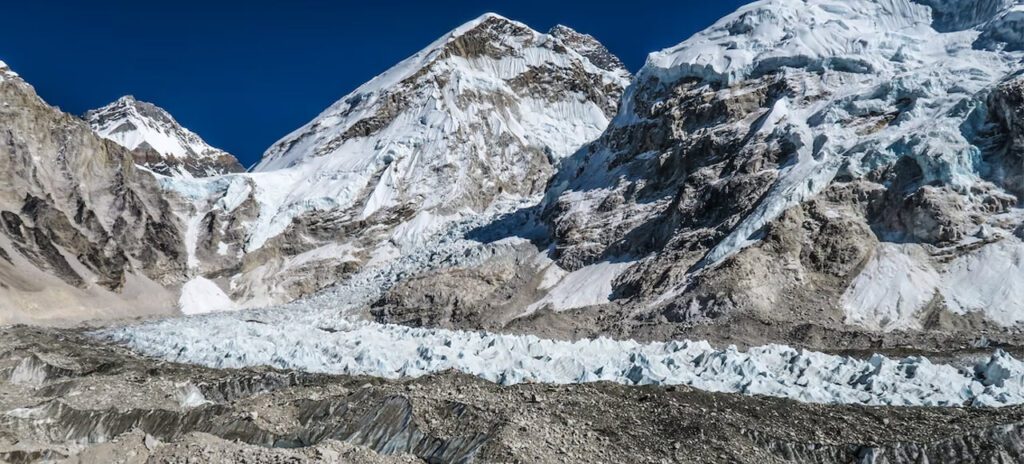
The average temperature during the day can range from 10°C to 15°C (50°F to 59°F), and it can drop to as low as -10°C to -15°C (14°F to 5°F) at night. The temperature at Everest Base Camp can vary depending on the time of day and the altitude. As you climb higher into the mountains, the temperature will gradually decrease. The nights can be especially cold, and it’s important to have warm clothing to keep you comfortable.
Crowds at Everest Base Camp in October
The Everest Base Camp in October is all about hustle and bustle. This trek is undoubtedly one of the most popular in the world, and for good reason. The stunning natural beauty of the region, combined with the challenge of trekking at high altitudes, draws thousands of adventure-seekers every year. But with popularity comes crowds, and the Everest Base Camp trek in October is no exception. The trail can be quite busy, with trekkers from all over the world making their way up to the base camp. This can result in long lines at certain points along the trail, such as the popular suspension bridges and tea houses. But fear not! Despite the crowds, there are plenty of ways to make the most of your experience on the Everest Base Camp trek in October.
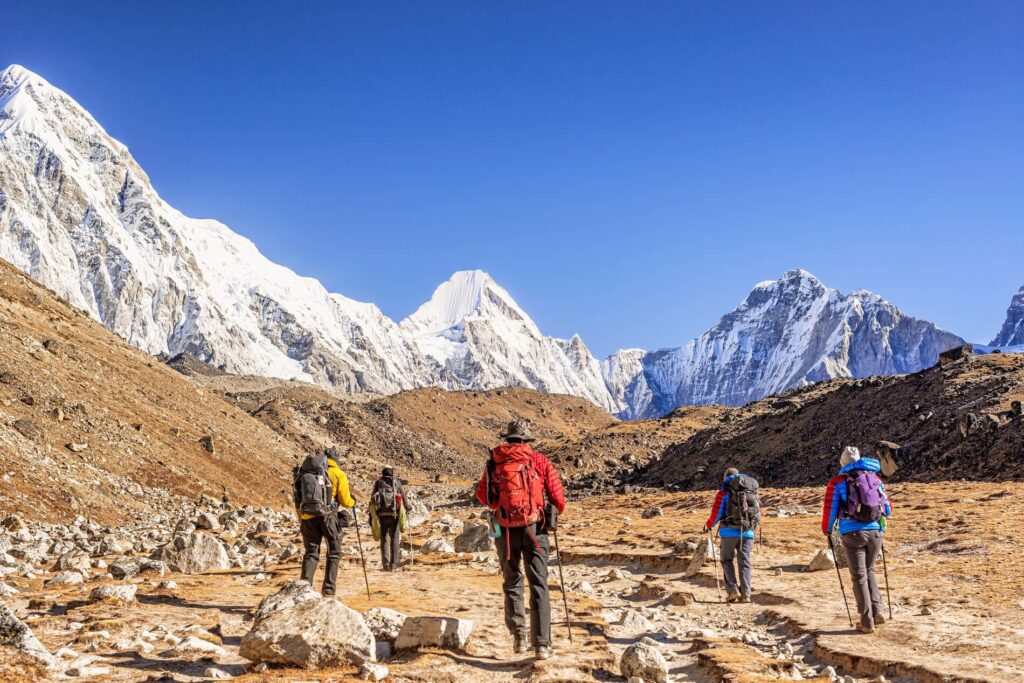
First and foremost, embrace the camaraderie of your fellow trekkers. While the crowds can be overwhelming at times, they can also provide a sense of shared experience and community as you all work toward the common goal of reaching the base camp. While the crowds can sometimes make for a slower pace along the trail, there are ways to embrace the experience and make the most of your journey. One strategy is to take advantage of the many tea houses along the way, which offer a chance to rest and recharge while chatting with fellow trekkers. These tea houses can also provide a glimpse into the local culture and way of life, as many are run by Sherpa families who have lived in the region for generations.
Flora and Fauna that were found on Everest Base Camp in October
Welcome to the breathtaking world of the Everest Base Camp trek in October. As you make your way through the rugged and stunning terrain, you will be surrounded by a diverse range of flora that thrives in this high-altitude environment. From towering rhododendron trees to delicate alpine flowers, the flora of the Everest Base Camp trek is a sight to behold.
Also Check: An Overview of Everest Base Camp
Flora
The Everest Base Camp Trek is an incredible journey that takes you through the heart of the Himalayas. The trek offers stunning views of the world’s highest mountain peaks and also provides a chance to explore the rich biodiversity of the region. In October, the trail is filled with an array of plant species that add to the beauty of the trek. Here are some of the plants you can expect to see on your Everest Base Camp trek in October:
- Rhododendron Tree: One of the most striking features of the trek in October is the vivid colors of the rhododendron trees that are found in abundance along the trail. These majestic trees can grow up to 20 meters in height and are covered in bright red, pink, and white blooms that create a stunning contrast against the lush green landscape.
- Blue Poppy: Another stunning flower that you may encounter on the Everest Base Camp trek in October is the blue poppy. These delicate flowers are found at elevations of around 3,000 meters and are a rare and coveted sight for nature lovers. Their vibrant blue color stands out against the rocky terrain, making for an unforgettable photo opportunity.
- Edelweiss: As you climb higher, you will come across a range of alpine flowers that are adapted to the harsh conditions of the high-altitude environment. One such flower is the edelweiss, which is known for its soft white petals and striking yellow center. This flower is found at elevations of around 4,000 meters and has become a symbol of the alpine regions of the world.
- Other notable flowers that you may encounter on the Everest Base Camp trek in October include the Himalayan primrose, the yellow cinquefoil, and the Himalayan bellflower. Each of these flowers is uniquely adapted to the challenging environment and offers a glimpse into the incredible biodiversity of this region.
Fauna
As you make your way through the stunning landscape, take a moment to appreciate the incredible diversity of the natural world and the unique adaptations that allow these animals to thrive in this harsh environment. Whether you’re an avid nature lover or simply seeking a unique adventure, the fauna of the Everest Base Camp trek in October is an unforgettable experience that you won’t soon forget. Here are some of the animals that you may encounter during your trek to EBC:
- Snow Leopard: One of the most iconic animals that you may encounter on the trek is the snow leopard. These elusive cats are rare and difficult to spot, but the October season offers a greater chance to catch a glimpse of them as they move down to lower elevations in search of prey. Their thick white fur and stealthy movements make them a true symbol of the Himalayas.
- Himalayan Monal: This striking bird is known for its vibrant plumage, which includes a metallic green head, a blue-green breast, and a long, iridescent tail. They are often seen in the forested areas along the trek, where they forage for food and call out to one another with their distinctive calls.
- Himalayan Black Bear: If you’re lucky, you may also come across the Himalayan black bear on the trek. These bears are usually found in forested areas and are known for their thick, black fur and distinctive white chest markings. While they are generally shy and prefer to avoid humans, sightings are not uncommon on the Everest Base Camp trek.
- In addition to these iconic animals, you may also encounter a range of other wildlife, including the Himalayan tahr, the musk deer, and the red panda. Each of these animals is uniquely adapted to the challenging environment and offers a glimpse into the incredible biodiversity of this region.
Festivals at Everest Base Camp in October
The Everest Base Camp is not only a place of adventure but also a place of cultural significance. Here are some festivals that are celebrated at Everest Base Camp in October:
Thame Festival:
The Thame Festival is celebrated by the Sherpa community in the Thame village, located in the Solu Khumbu region. The festival is celebrated to honor the local deity, who is believed to protect the village from natural disasters. The festival is celebrated with traditional dances, music, and offerings made to the deity. The highlight of the festival is the masked dance performed by the monks, which represents the victory of good over evil.
Also Check: Clothing for the Everest Base Camp Trek: A Comprehensive Guide
Tihar Festival:
Tihar, also known as the Festival of Lights, is a five-day festival celebrated in Nepal. It is a time of joy and celebration, and the Everest Base Camp region is no exception. During Tihar, the Sherpa community living in the Everest Base Camp region celebrates the bond between humans and animals uniquely and excitingly. The festival begins with Kaag Tihar, where crows are worshipped as the messengers of death and good fortune. People offer food to the crows.
The second day of Tihar is Kukur Tihar, where dogs are worshipped as the guardians of the home. People apply tika and garland them with marigold flowers. They offer them their favorite food and pray for their well-being. It is a unique way of showing love and appreciation for these loyal companions.
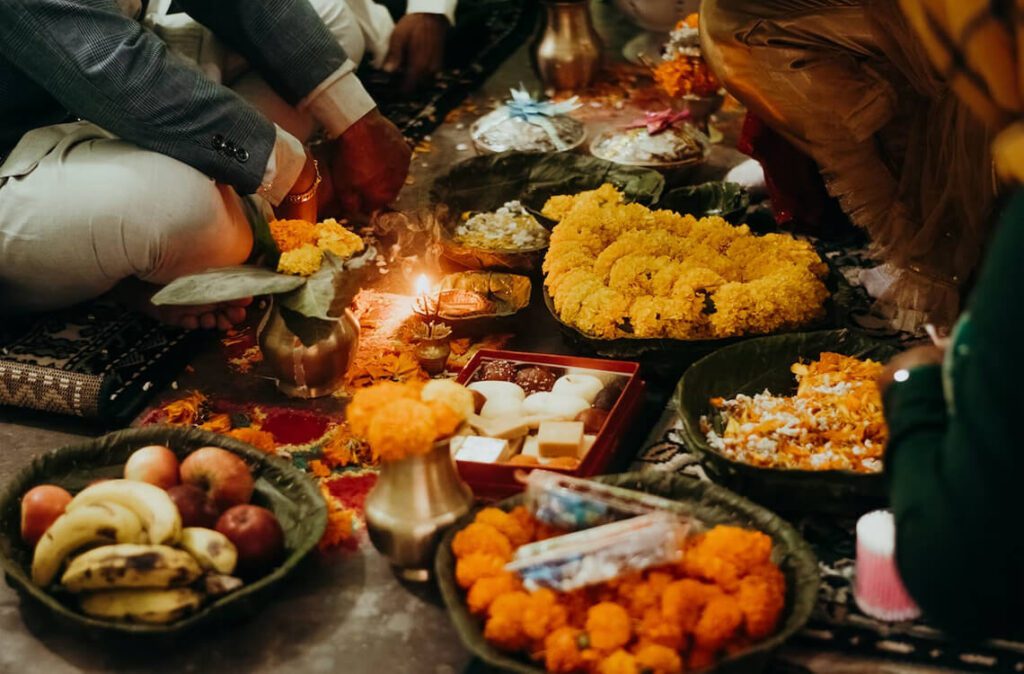
On the third day of Tihar, it is the turn of the cows. The cow is considered a sacred animal in Hinduism, and people worship them as a symbol of wealth and prosperity. They decorate their horns with colorful ribbons, apply tika on their foreheads, and offer them food and water.
The fourth day of Tihar is the most important day of the festival. It is known as Laxmi Puja, where the goddess of wealth and prosperity, Laxmi, is worshipped. People clean their homes, decorate them with lights and flowers, and offer prayers to the goddess. It is believed that Laxmi visits the cleanest and most brightly lit homes. The final day of Tihar is Bhai Tika, where brothers and sisters express their love and affection for each other. Sisters apply tika on their brother’s foreheads and offer them sweets, and brothers give gifts in return.
Other Trek
If you’re planning a trek to Everest Base Camp in October, you’re in for a treat! Not only is the weather ideal for trekking, but there are also plenty of side treks that you can take to make your journey even more memorable.
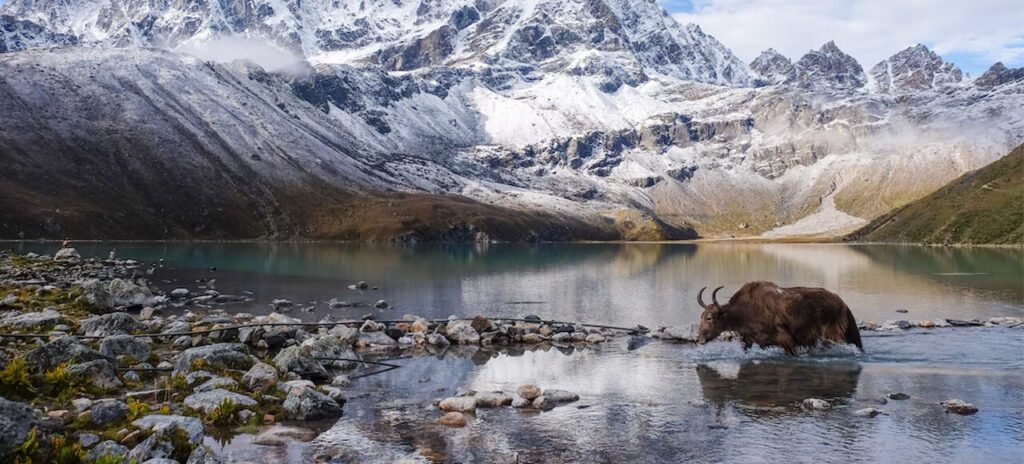
One of the most popular side treks is to visit the stunning Gokyo Lakes. Located just a few hours from Namche Bazaar, this series of six crystal-clear lakes is a breathtaking sight to behold. The trek up to Gokyo is a bit more challenging than the standard Everest Base Camp trek, but the rewards are well worth it. Along the way, you’ll pass through traditional Sherpa villages, see stunning Himalayan peaks, and witness the beauty of the Ngozumpa glacier which is the longest Himalayan glacier.
Another popular side trek is to hike up to Kala Patthar. This small peak, located just a few kilometers from Everest Base Camp, offers unparalleled views of the surrounding Himalayas. From the summit of Kala Patthar, you’ll be able to see Mount Everest, Lhotse, Nuptse, and many other peaks. The hike up to Kala Patthar is steep and challenging, but the views from the top are breathtaking.
Tengboche Monastery for Cultural Experience
If you’re looking for a more cultural experience, consider taking a side trek to the Tengboche Monastery. This ancient monastery, located high in the Himalayas, is one of the most important centers of Tibetan Buddhism in Nepal. Here, you’ll have the opportunity to witness traditional Tibetan Buddhist ceremonies and rituals and learn about the history and culture of the Sherpa people.
You may also like: Everest Base Camp in August – Temperature, Weather, Festivals & Many More
If you’re looking for a bit of adventure, consider taking a side trek to Island Peak. This 6,189-meter peak is extremely popular among beginner trekkers and offers a challenging but rewarding climb. Along the way, you’ll trek through beautiful valleys, cross glaciers, and experience the thrill of climbing a Himalayan peak.
Tips for Everest Base Camp in October
If you’re planning a trek to Everest Base Camp, here are some tips to help you prepare and make the most of your adventure.
- Plan your trek: It’s essential to plan your trek well in advance to ensure that you have the necessary permits, gear, and accommodation bookings. You can choose to trek solo or hire a guide or porter to assist you with your journey. Make sure you do your research and plan your itinerary accordingly.
- Train well: The trek to Everest Base Camp is physically demanding and requires a high level of fitness. It’s essential to prepare yourself by training regularly and building up your endurance. You should include activities like hiking, running, cycling, and strength training in your training regimen.
- Take care of your health: Altitude sickness is a common problem faced by trekkers at high altitudes. It’s essential to acclimatize well and take necessary precautions to prevent altitude sickness. You can also carry medications like Diamox to prevent altitude sickness. It’s also important to maintain good hygiene and avoid drinking alcohol and smoking. Make sure you are hydrated.
Merits and Demerits of Everest Base Camp in October
If you’re looking for an adventure of a lifetime, then trekking to Everest Base Camp in October is an experience you simply cannot miss. Let’s explore some of the amazing merits of trekking to Everest Base Camp in October.
Perfect Weather
October is one of the best times of year to trek to Everest Base Camp because the weather is generally dry and clear. The monsoon season is over, and the skies are often blue with very little chance of rain or snow. The temperatures are also relatively mild, with daytime temperatures ranging from 10 to 15 degrees Celsius, and nighttime temperatures dipping to just below zero.
The stunning natural beauty
The views of the Himalayas in October are simply breathtaking. The mountains are often crystal clear against the blue sky, making for incredible photo opportunities. You’ll also get to witness the changing colors of the trees and foliage as the leaves turn from green to gold and red, creating a stunning visual feast.
The festive season
October is also a festive season in Nepal, with two major festivals taking place: Dashain and Tihar. This is a great opportunity to experience the local culture and traditions, as well as enjoy the festive atmosphere. The trekking trails are often decorated with prayer flags and lights, creating a magical ambiance.
Opportunities for side trips
With the ideal weather and fewer crowds, there may be opportunities to take side trips to nearby attractions such as Gokyo Lakes, Chhukung Valley, or Kala Patthar.
High success rate
The October weather conditions and relatively low altitude sickness risk make it easier to complete the trek successfully.
Demerits
Although it is an exhilarating and exciting trek, it does have its drawbacks. Some of them are:
Crowded Trails:
October is considered the peak season for trekking to Everest Base Camp. During this time, the trails are crowded with trekkers from all over the world.
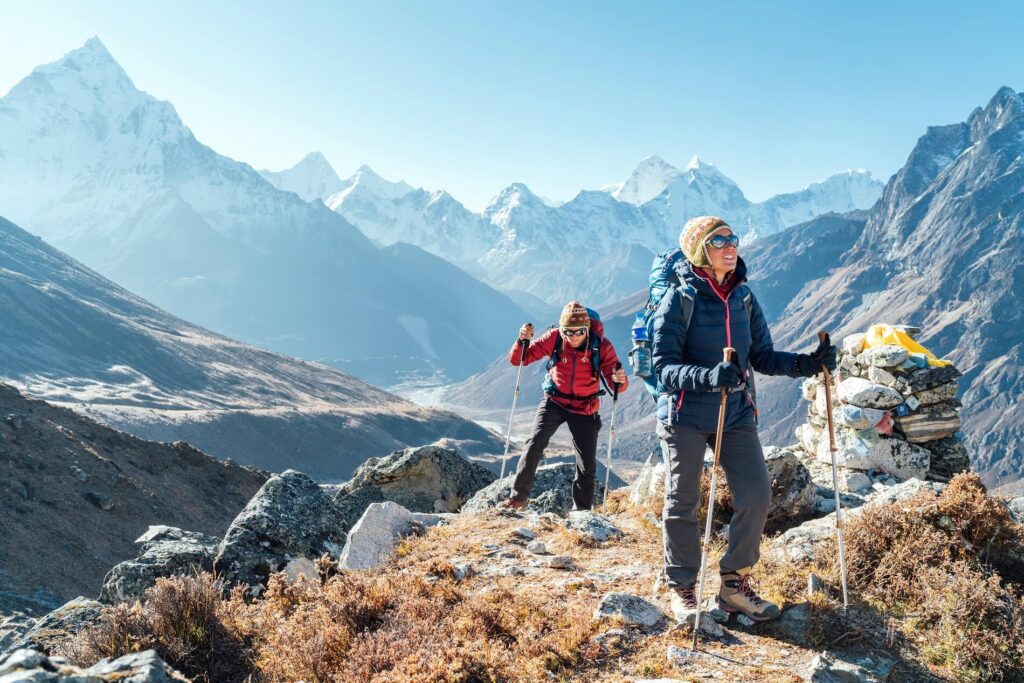
This can make the trek quite challenging, as you will have to share the trail with a large number of people. The overcrowding can also cause delays and difficulties in finding accommodation, especially in the popular tea house villages.
Higher Prices:
The peak season means higher prices for accommodation, food, and other trekking services. This can make the Everest Base Camp trek more expensive than it would be during the off-season. The prices can be even higher in the popular tea house villages, where demand is high.
Cold Weather:
While October is generally considered a good time to trek to Everest Base Camp, the weather can be unpredictable. The temperatures can drop below freezing at night, and there is a higher chance of snowfall. This can make the trek quite challenging, especially for those who are not used to trekking in cold weather.







